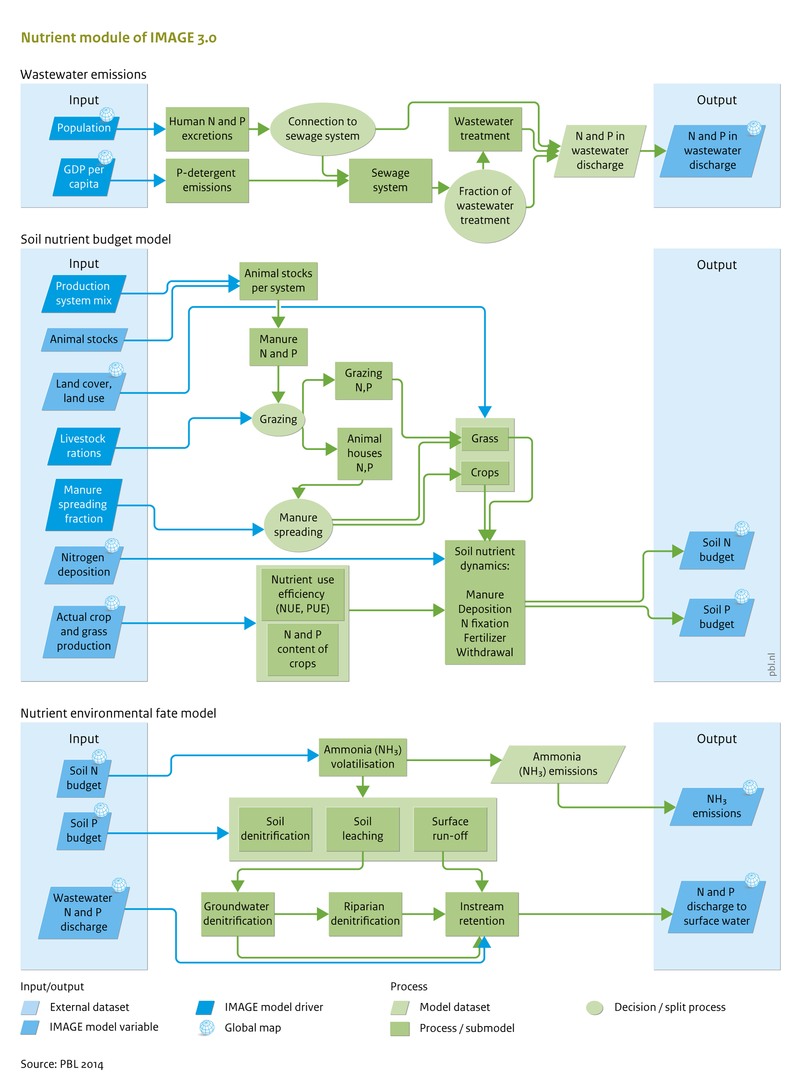Flowchart Nutrients: Difference between revisions
Jump to navigation
Jump to search

No edit summary |
No edit summary |
||
| Line 7: | Line 7: | ||
|Component=Nutrient balances; | |Component=Nutrient balances; | ||
}} | }} | ||
(a) Wastewater nutrient model that generates N and P discharge to surface water; (b) Soil nutrient budget model; (c) Nutrient environmental fate model | (a) Wastewater nutrient model that generates N and P discharge to surface water; (b) Soil nutrient budget model; (c) Nutrient environmental fate model that describes N and P in the environment, including the pathways and processes of surface N and P runoff; soil denitrification; leaching of N to groundwater; groundwater transport and denitrification; denitrification in the riparian zone (the interface between land and streams or rivers); discharge to streams and rivers; N and P retention (in streams, rivers, lakes, wetlands and reservoirs). | ||
Revision as of 11:40, 12 February 2014

Caption: Simplified scheme of the IMAGE nutrient model.
Figure is used on page(s): Nutrients
(a) Wastewater nutrient model that generates N and P discharge to surface water; (b) Soil nutrient budget model; (c) Nutrient environmental fate model that describes N and P in the environment, including the pathways and processes of surface N and P runoff; soil denitrification; leaching of N to groundwater; groundwater transport and denitrification; denitrification in the riparian zone (the interface between land and streams or rivers); discharge to streams and rivers; N and P retention (in streams, rivers, lakes, wetlands and reservoirs).